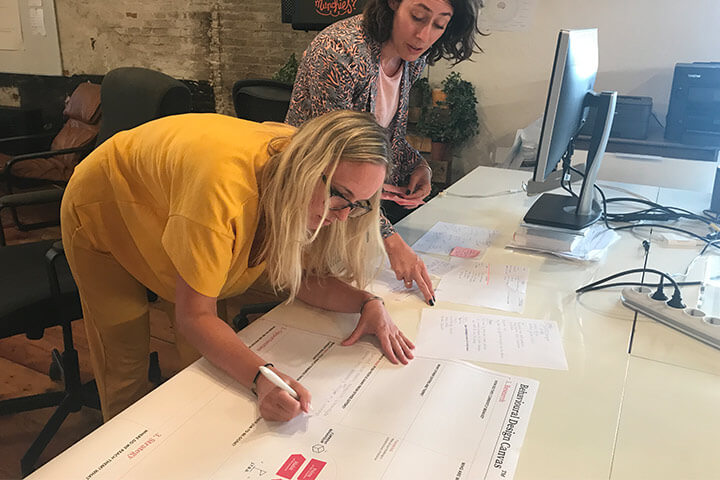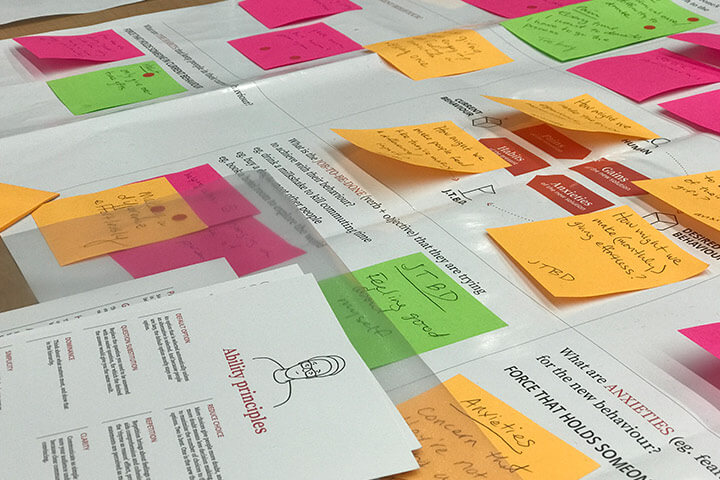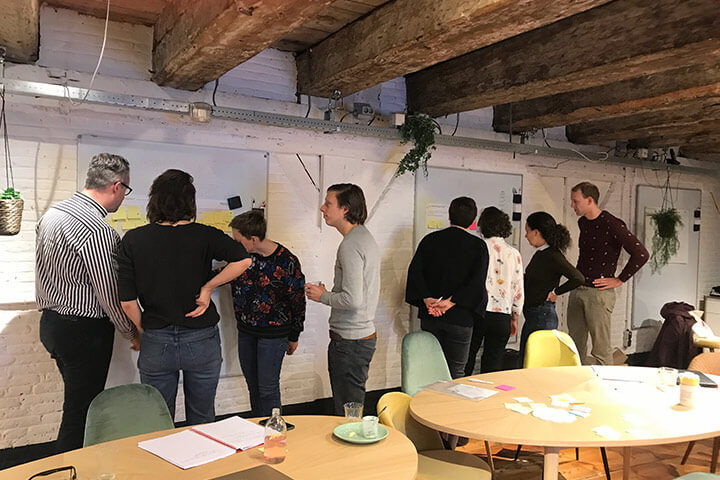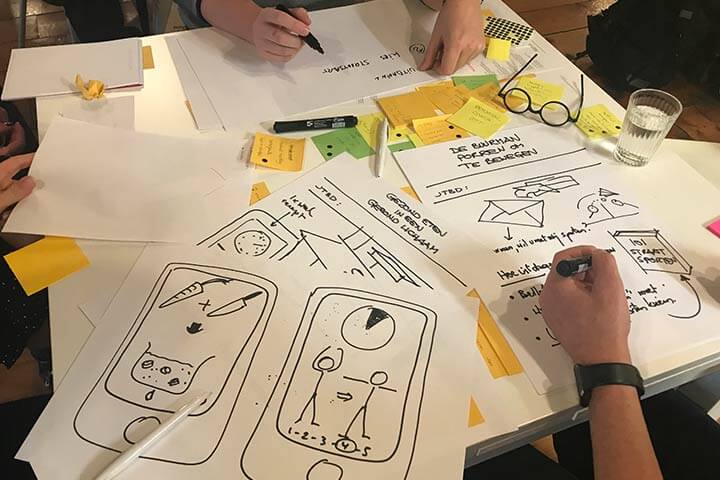Metaphors are a powerful way to influence people’s behavior. They play on your subconscious mind by persuading based on something you can easily see in front of you. In short, a metaphor gives persuasion power, but beware: don’t just fall into the power of metaphors. It leads to visual perception, or rather selective perception, which influence your behavior and decisions.

Influence through metaphors
There are many ways in which influencing behaviour takes place. One of the strongest influencing factors that create unconscious influence is metaphors. This has everything to do with how communication and influence work. In this blog post, I will take you through the power of influence through metaphors and what you can do about it.
Persuasive design: the power of the metaphor
A few weeks ago, in our management meeting, we had a heated disagreement about an urgent improvement I thought we needed to make in our processes. Not everyone agreed. One of the participants in the discussion tried to end the discussion with the following metaphor:
“You cannot repair an aircraft in flight.”
For a few minutes, I was blown away by the power of this metaphor. There was a beautiful, powerful logic in it. I could imagine an Airbus 380 at 10 km altitude, flying at 1000 km/hour. Indeed, there was no way to change the aircraft while flying. That would be suicide.
But then I soon realised that I was being cleverly manipulated in my decision-making process. I fell for the oldest trick in the book. The power of a great metaphor forces you to obey the rules of that metaphor. After going along with that metaphor, can’t help but look at your business with the internal logic of a plane flying 1,000 km/hour. I also realised that I must have caused a lot of stress with my demand for process improvement. The metaphor was a friendly hint that I was trying to be reckless.
Metaphors are tools of strategic framing
I decided not to budge, knowing that a frame is an influence booby trap. If you don’t reject a metaphor, you accept its rules. The first thing I tried was to put a perverse spin on the logic of the metaphor by framing it through communication. I asked, “But what if a plane crashes? Wouldn’t you want to try to fix it in flight?” Boom! I thought it was pretty clever myself. But I was defeated by the internal logic of my frame with a simple answer: “Sure, but we’re not a crashing plane, are we? I had to confess that I lost this framing battle and this did not lead to the desired decision-making process. This influencing attempt was ineffective and clearly did not lead to the desired behaviour.
Failed influence attempt: a new frame
Two days later, in another meeting, someone suddenly launched a new metaphor:
“We must constantly jump off cliffs and develop our wings on the way down”.
Everyone agreed. Truth well told. Except: It means the exact opposite of “You can’t fix a plane in flight”. When our brains accepted the cliff metaphor, we could all imagine a brave person jumping off a cliff and using all his imagination to figure out how to fly before he hit the ground. It felt like the kind of hero you would like to be this seemed, in short, a successful frame for influencing. However, the problem with this metaphor is that it conjures up thoughts of radical risks, wild experiments and spectacular failures. Not exactly the behaviours that people in organisations have much appetite for. People loved the metaphor, but it did not provoke any desired behaviour at all so effectiveness failed to materialise.
Influence success with friendly framing
A third attempt was much more successful. I had learnt my lesson. In the next meeting, I introduced the metaphor of the three buttons. In running an organisation, I told the team, we have three buttons we can work with: The first button is for cutting costs. The second is for optimising profits on existing revenues. The third is for increasing revenue.
I visualised turning these buttons in the air. It worked like a charm. The rest of the discussion was about which knobs we could turn and how softly or hard we could turn them. The metaphor felt much friendlier. Instead of an Airbus hurtling through the air at lightning speed, or a guy jumping off a cliff, we could now visualise a dashboard with knobs to calibrate gently and carefully. Everyone was on board.
Recap influencing through metaphors
The moral of this story: beware of metaphors. They take possession of your autopilot brain in ways you can’t imagine. They define the logic of how you can think about a situation. The only way to escape this logic is to introduce new friendly metaphors that influence the decision-making process and lead to desired behaviour.
How do you do? Our name is SUE!
Discover how we can help you
Do you have a challenge in which people need to change their behaviour? Or do you have an influencing challenge? At SUE, our experienced Behavioural Design Leads daily help national and international organisations apply behavioural science to change behaviour within organisations (transformation), influence customer behaviour (optimisation and innovation: e.g. optimise customer journeys, product development or optimisation, improve marketing/UX) or get citizens on board with policies.
Want to know more? Then book a free consultation hour with SUE here. We will gladly discuss how Behavioural Design can help solve your challenge. This is completely non-binding and free, so don’t hesitate. You don’t buy a car without a test drive, either! Of course you can also call: +31-20 223 46 26. Would you like to see who we have worked for and which behavioural challenges we have solved? You can check it out here.
Suppose you want to learn more about how influence works yourself. In that case, consider joining our Behavioural Design Academy, our officially accredited educational institution that has already trained 2500+ people from 45+ countries in applied Behavioural Design. Or book an in-company training or one-day workshop for your team. Our training courses teach the Behavioural Design Method© and the Influence Framework©. Two powerful tools to achieve behavioural change in practice.
You can download the Behavioural Design Fundamentals Course brochure here, contact us here or subscribe to our Behavioural Design Digest. This is our newsletter in which we deconstruct how influence works in organisations, our lives and society.
Or maybe you’re just curious about SUE | Behavioural Design? You can read more about us here.









